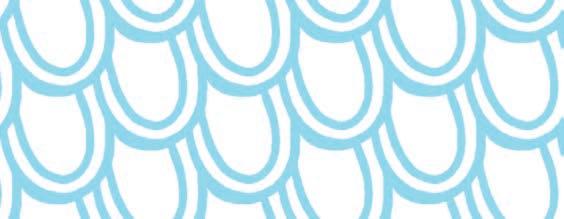
9 minute read
United by Water
UNITED
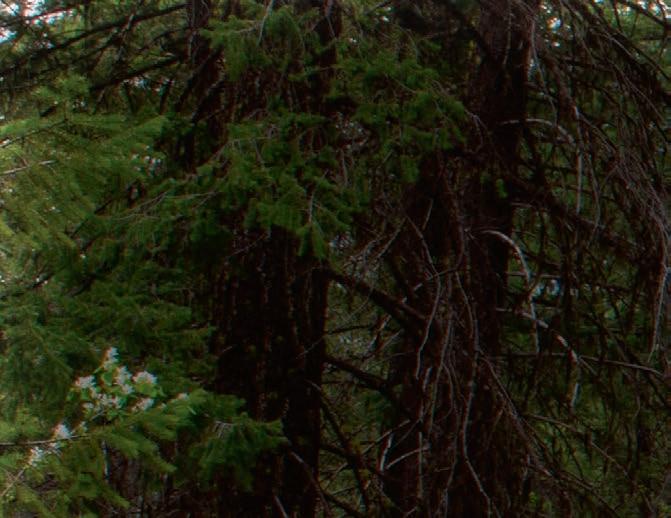
BY WATER
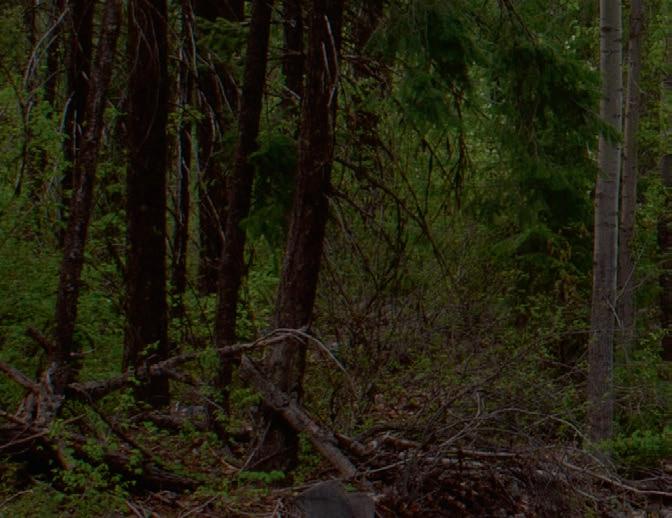

LEARNING FROM THE METHOW RIVER
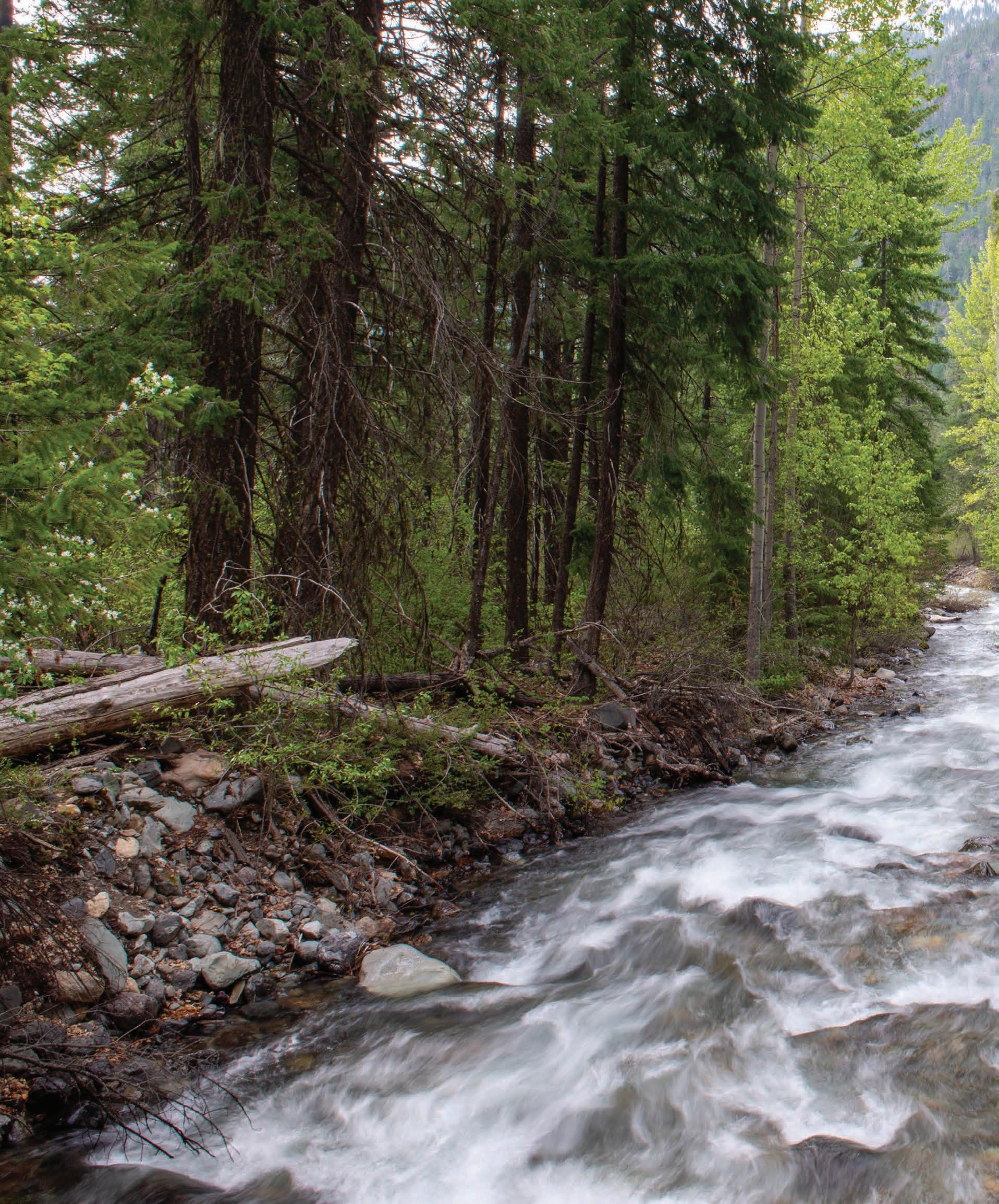
hen you stand on The Bush School Methow Campus, it takes a moment for your ears to name the sound you hear, constant and low, beyond the forest. You may have to unplug your city filters to realize it’s not the stream of tra c on I-5, but a literal stream, the steady movement of the Methow River. Water is at the center of Methow Valley life, geographically, culturally, and practically. We seek a swimming hole in the heat of the summer, ski through snowpack in the winter, and reset our irrigation in the spring. Yet the Methow community does not take water for granted; it is clear that our actions impact the water as much as the water impacts us.
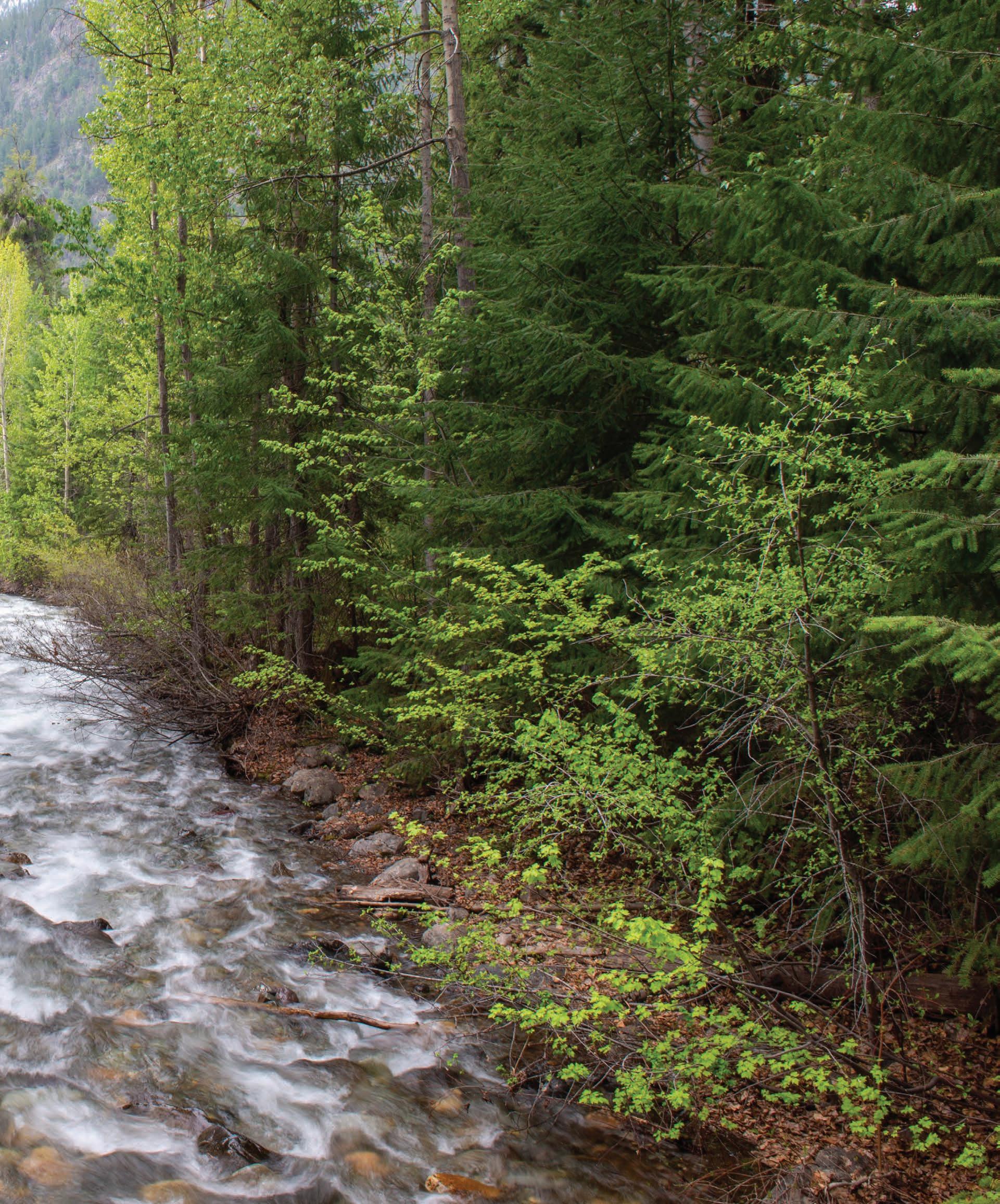
PROTECT WHAT YOU LOVE
In 2014, a Canadian mining company filed an exploratory drilling permit for a copper mine near the headwaters of the Methow River and Flagg Mountain, directly above Mazama. Concerned about the long-reaching impacts of open-pit mining, Methow Valley Citizens’ Council (MVCC), led by Maggie Coon, organized a community response called the Headwaters Campaign. Maggie explained to a group of Bush Upper School students, part of the AMP Geology Rocks, that she knew in order to unify the community around the cause, the message had to be positive. The goal was to unite, not to divide. Rather than focusing on the negative impacts of the mine, MVCC called on the community to protect what they loved, declaring the Methow “too special to mine.” Partnering with local filmmakers Benjamin Drummond and Sara Steele, they created a quilt of testimonials that stitched together what makes the Methow vital and unique: resilience, agriculture, heritage, public land, fish and wildlife, hunting areas, treaty rights, jobs, and water.
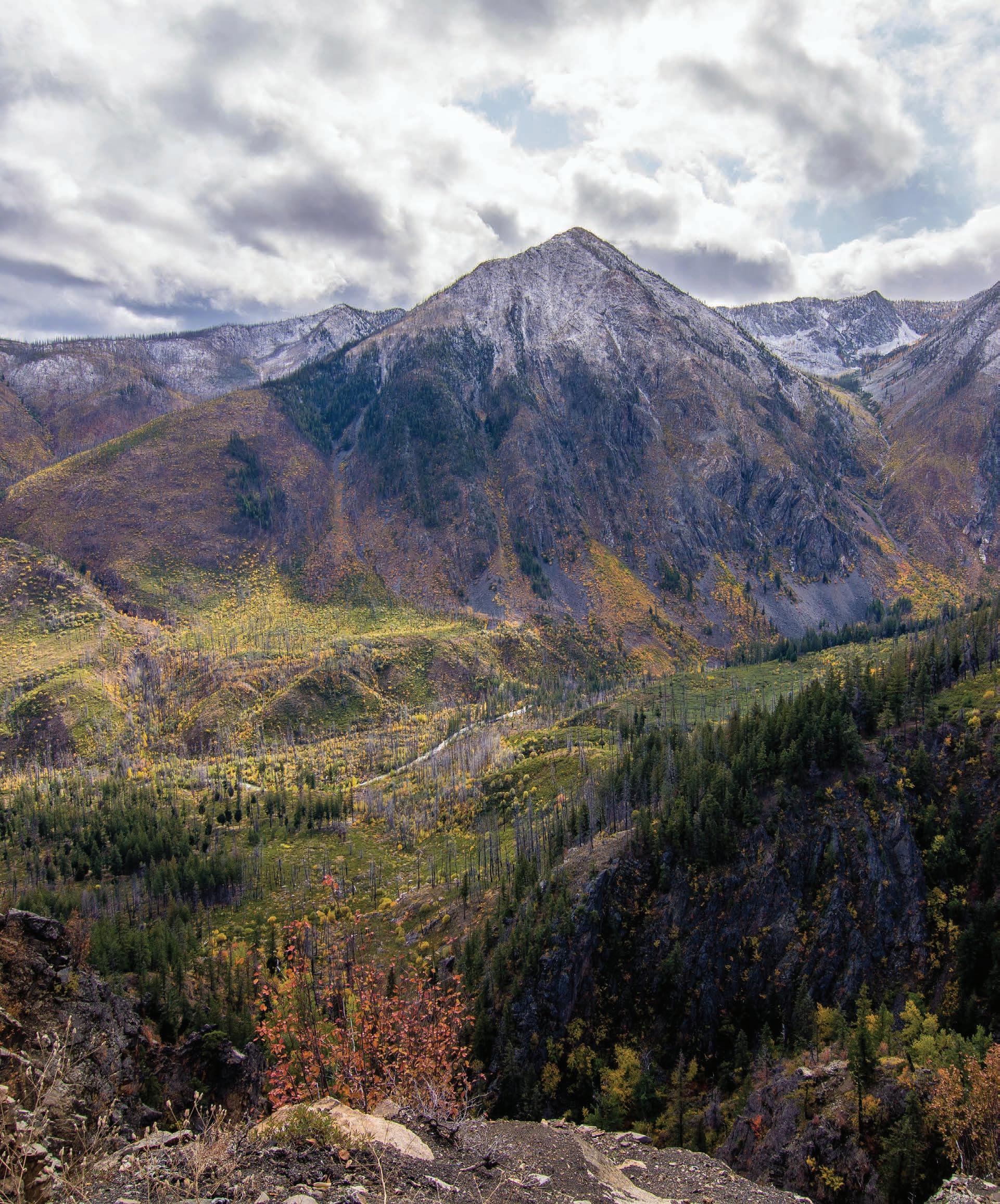
Public support was immediate and immense, inspiring local o cials to take the cause up the legislative ladder. On March 19, 2019, former President Trump signed the bipartisan-supported Natural Resources Management Act, which included permanent protection of 340,000 acres in the Methow watershed. This protected land comprises not only the Methow headwaters and Flagg Mountain, but also the surrounding hillsides and tributaries, as well as the avalanche chutes and waterfalls. Our water comes not only from the river, but also from the mountains that surround us. The watershed is the community of the river, and the health of one aspect impacts the health of the whole.
In Drummond and Steele’s short celebratory film, Permanently Protected, Maggie explains the extraordinary success of the MVCC campaign is noteworthy “because of the unanimity of support.” With this shared success comes responsibility. Maggie challenges that it is our job to “tell the stories of these successes, so that as more and more people come here, whether to live or to visit, they understand that the Methow isn’t this way by accident. It has required a whole community acting on behalf of this incredible place.” Just like the community relies on the watershed, so too does the watershed rely on the community. Or perhaps they are simply two words for the same thing. Everyone who comes to the Methow, whether on a Bush alumni weekend or a senior class retreat, is united. A love of place brings us together toward collective action.
CONFLUENCE
Local biologist and educator Amy Fitkin leads a group of Bush Eighth Grade hikers down Lost River Road, past their classmates belaying each other on Fun Rocks, and up the steep path of the Spokane Gulch Trail. From the ledge high above the valley floor, students catch their breath and their e orts are rewarded with a grand view. Below them, the valley expands and flattens, the path of the river reflecting the afternoon sun. Amy introduces key landmarks on the jagged horizon by name: Liberty Bell Spire, Kangaroo Ridge, Driveway Butte. She leads their eyes down the canyons to ribbons of smaller streams, intermittently visible between layers of green branches. Lost River, Early Winters, Robinson, Cedar—each winds their way down to join forces with the Methow River. Each of these confluences is a union of distinct waters from separate landscapes, a merging of paths now united in a common journey.
The town of Winthrop is situated at such a confluence, where the Chewuch River meets the Methow. Kevin van Bueren, owner of North Cascades Fly Fishing, views this spot through the eyes of both a fisherman and a fish. Because the Chewuch is deeply seated in the Cascades, it melts earlier and runs higher first. Kevin explains that “salmon or steelhead will stage in the Columbia until their watershed is just the right temperature.” As these big fish make their way upstream, “they may duck into the mouth of a smaller river to enjoy cooler waters as they wait to
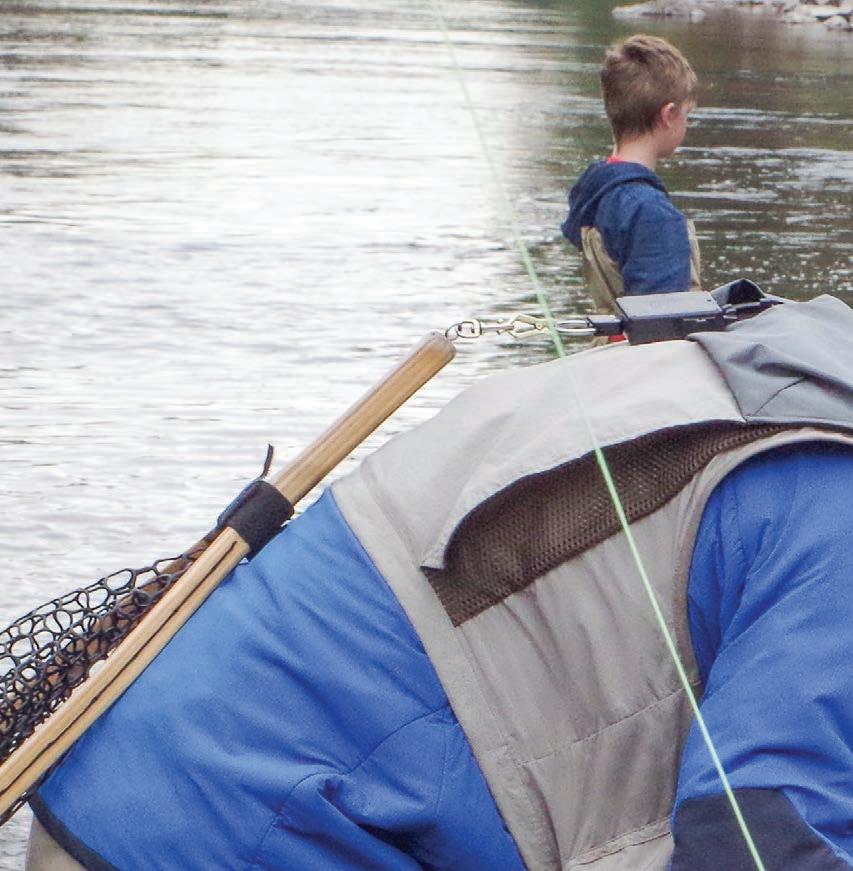
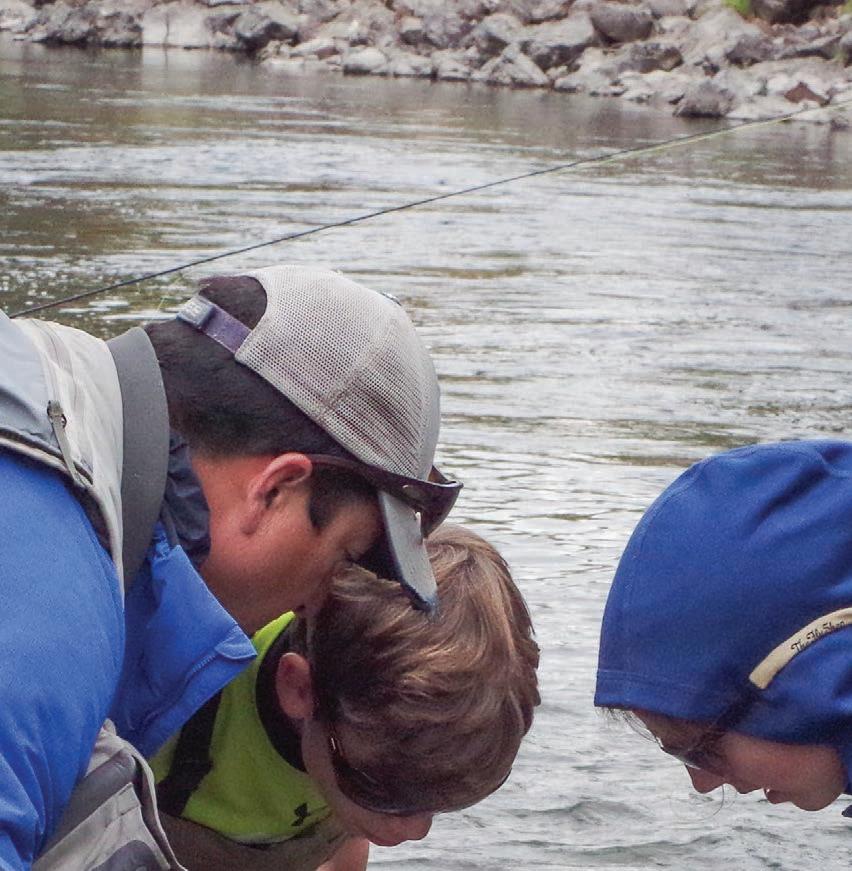
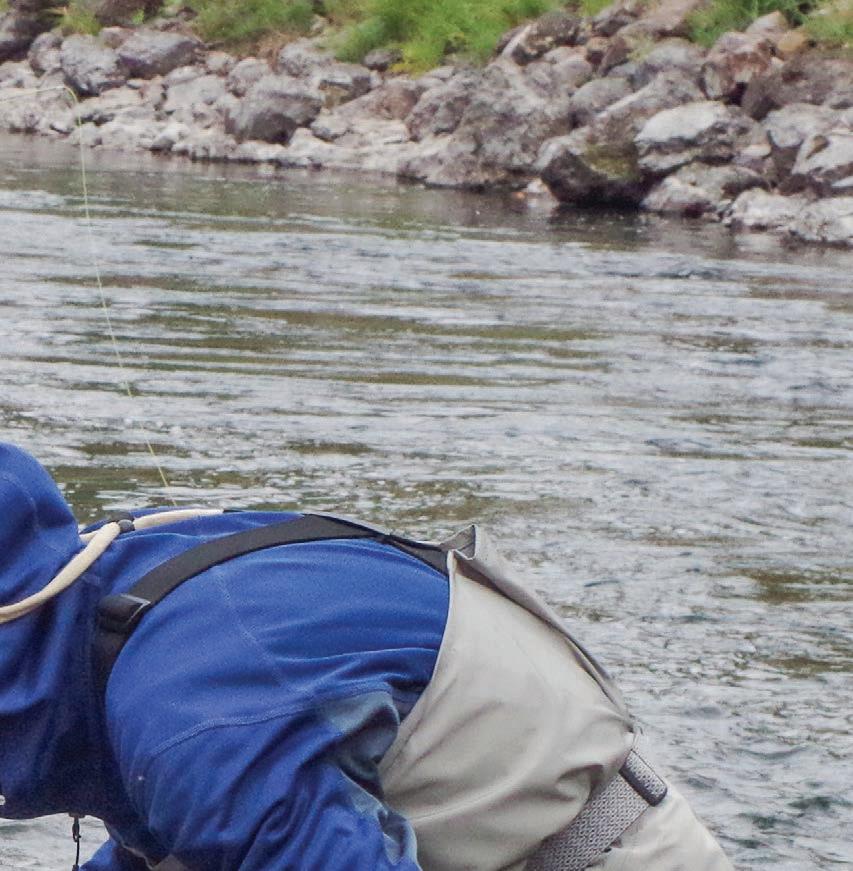
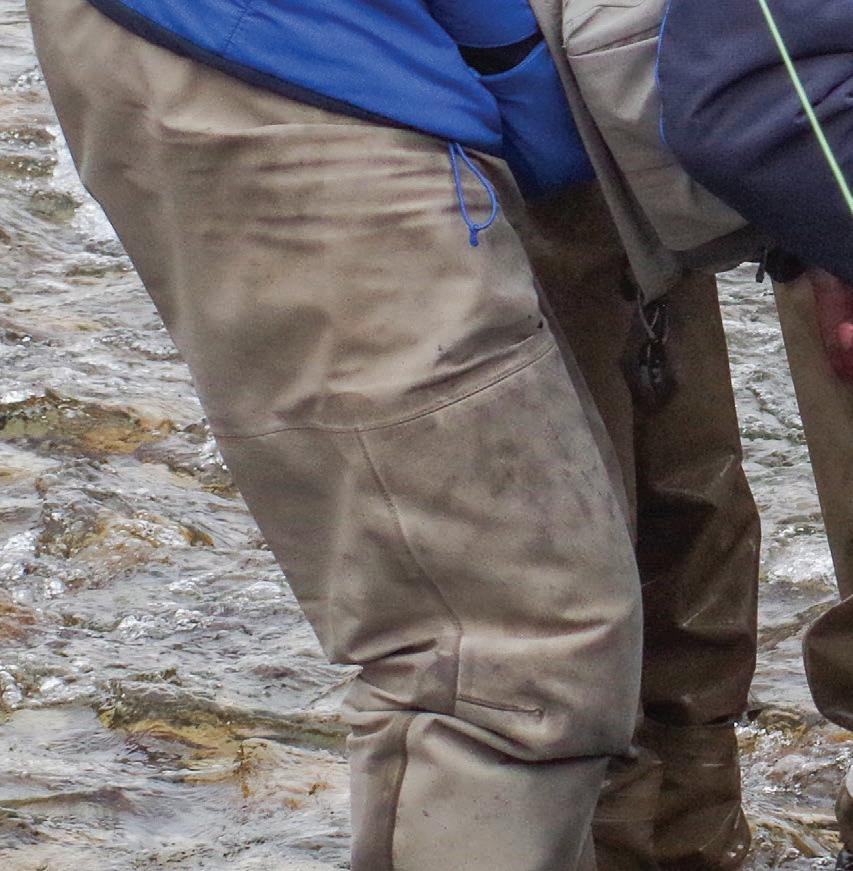
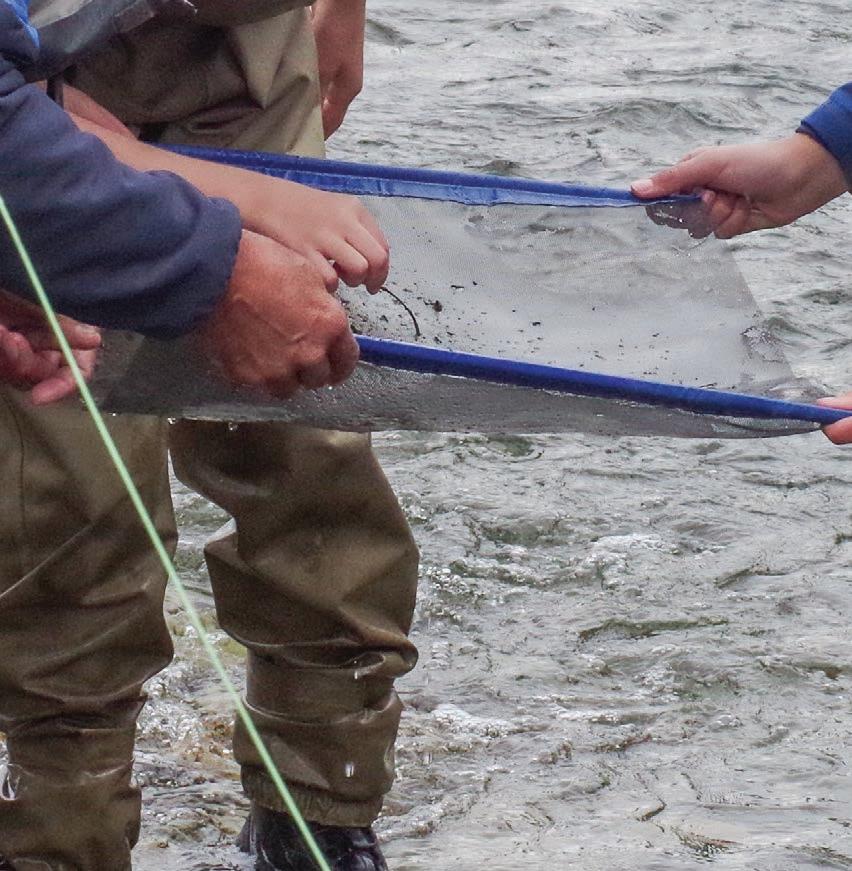
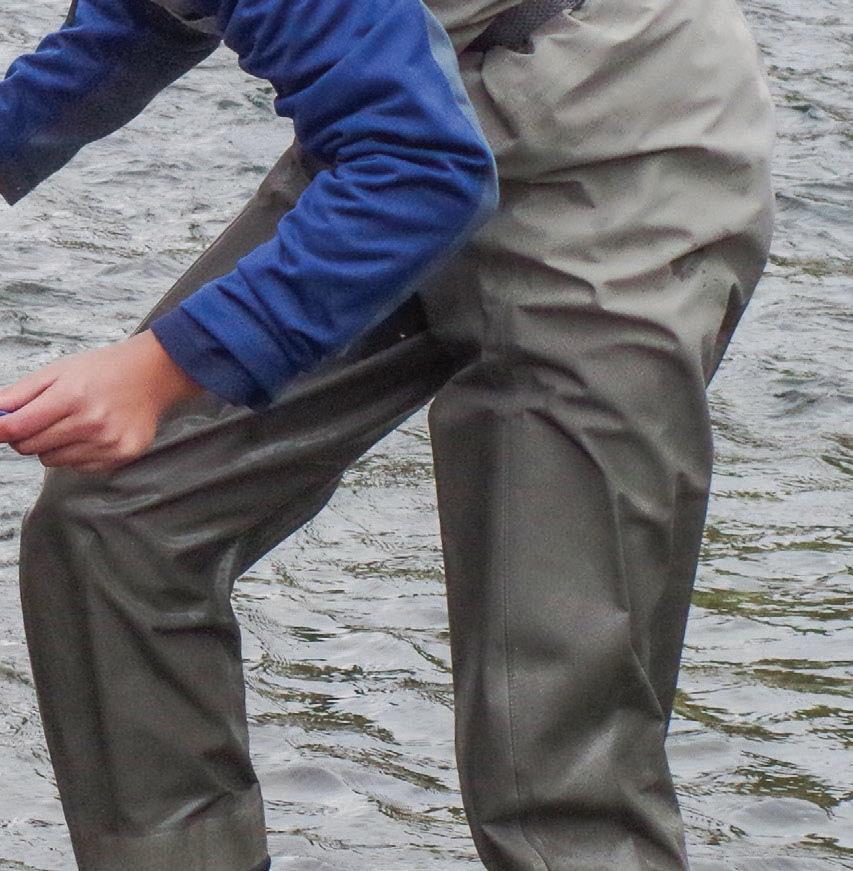
move to their home water.” Fish also benefit from the introduction of a di erent perspective, a di erent water narrative.
The Eighth Grade hikers are about to encounter a confluence of their own. The Bush School is made up of several of these key points where rivers of students combine and braid together: Kindergarten, Sixth Grade, and Ninth Grade. At each of these entry points, students from distinct backgrounds and experiences come together, contributing their own narrative and uniting on their common Bush journey.
RIVER AS TEACHER
Six hands dunk into the water and work together to flip a large, flat stone. A quick dip of a net brings up small bits of debris and several naiad stoneflies, wriggling in the sunlight. Stonefly are an indicator species, their presence a sign of good water quality. They are also a choice snack for trout and salmon. Learning the habits of the stonefly is key in learning to fly fish.
Jonathan Stratman has been teaching students to fly fish in the Methow for over ten years. His popular after-school club and summer camp sessions fill




quickly with students eager to try their hands at creating their own flies and learning to think like a fish. But there’s more to becoming a fly fisher than casting. Students begin to learn a perspective beyond themselves, a connection between self and river. When Jonathan considers the mindset of fly fishing, he shares that when he’s “focused on a specific run or a section of water, I can almost feel the connection. I’m a part of everything that’s happening around me.” Jonathan hopes that his students take much more than science from his fishing clubs: “Being on the river allows me to be completely who I am, free from distraction and worry. This is what I hope students take away from the experience.” Teaching this awareness at a young age grows not only a healthy community, but also a community attuned to the health and importance of the river.
When Phil and Cathy Davis purchased a corner of vacant riverfront along Highway 20 in Winthrop, they had a vision for a community space that honored the people, the river, and the fish who have called this place home. Phil describes both the goal and the process of creating the park as a “shared stewardship of land, water, and each other.” Dynamic metal sculptures by Virgil “Smoker” Marchand titled “Water is Life” and “Coming Home” bring to life the Methow people who fished and lived along these banks for thousands of years. Now the river’s edges rely on newcomers for restoration and protection.
The September heat was no ally to the group of Bush students wielding shovels and wheelbarrows at Homestream Park, helping create the trail that mirrors the homeward path of the Methow salmon. Punctuated by nine boulders that represent the dams a salmon must overcome to return to its home river, the path invites participation and speculation. Speculation is more challenging in the heat of the afternoon, and when Cathy Davis arrived with boxes of ice cream bars, rakes were quickly dropped in exchange for a treat and shared laughter. Behind them, the river echoed in its own language, and the cottonwoods’ shadows beckoned with reprieve. Collective work deserves collective rest, the group stronger because of their e orts.
Just a month later, Homestream Park held its grand opening celebration, a confluence in its own right of cultures and contributors, united by a shared support of the park’s purpose. Mark Miller, whose family has lived in the Methow for 500 generations, spoke on local radio station KTRT with host Don Ashford about his perspective of Homestream Park and why he chose to be involved. The goals of park, Mark explains, exemplify “the concept of a whole valley ecosystem and spiritual system.” Homestream Park “represents salmon, it represents water, but it also represents dirt, the soil, that environmental wholeness that people come to the Methow for.” By contributing their hands and hours, Bush students become part of that wholeness, carrying the awareness of purpose on their journeys, carrying the story of the salmon and the river.
Back on campus, trails diverge into the dappled light of the cedar forest. Whether you travel the beaver pond trail or the ski trail or the snowshoe trail, you will find the path you chose brings you eventually to the Methow River. Here, the sound of water fills your ears and details assert themselves on your senses. You are here and nowhere else. When we are in the presence of water, whether casting a line or dipping a paddle, we enter a shared narrative of time and place. This water circling our feet reminds us to be mindful of the present, grateful for our surrounding watershed, and thoughtful of what we bring to the next confluence.




